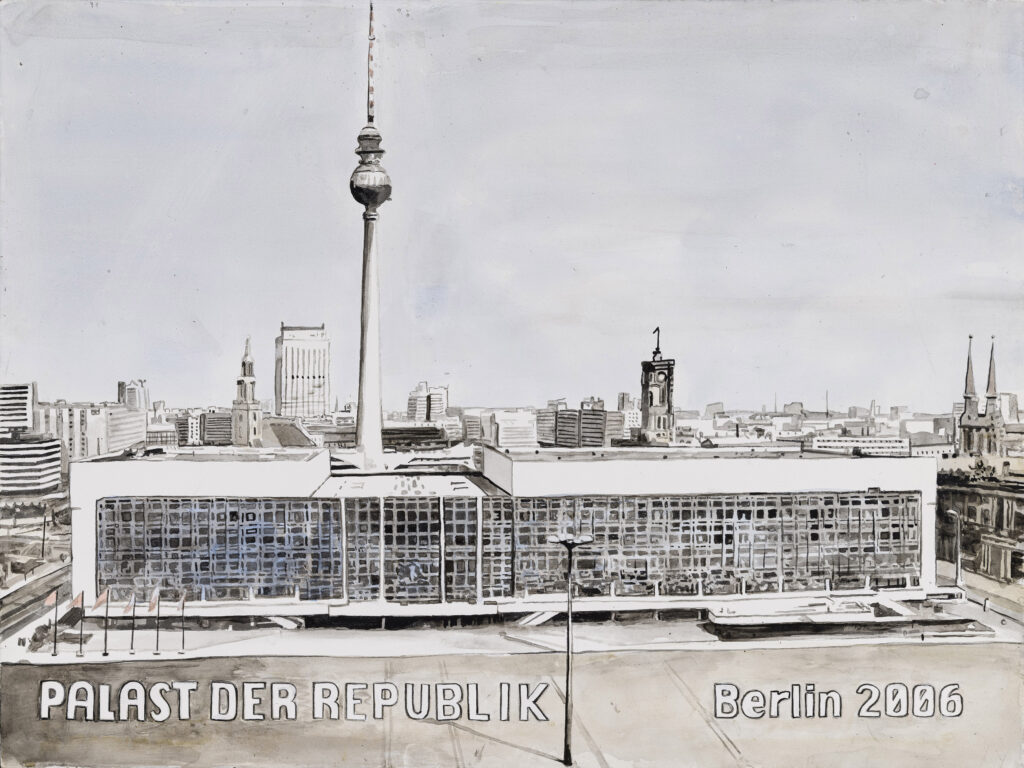Berlin, Germany
Demolished 2006

I was in Berlin the year before it was torn down and did not go in. But there is a chance: a group of lobbyists are reusing the samephrases that were used to argue for rebuilding the Stadtschloss to campaign for tearing it down again and rebuilding the Palast der Republik. Anon.
Also requested by Johan S. & Gisela v.K.
The Palast der Republik (Palace of the Republic) was a modernist building in Berlin that housed the Volkskammer (parliament) of the German Democratic Republic (GDR) from 1976 to 1990. It also housed a disco, several restaurants, a bowling alley, a post office, art galleries, auditoria and a theater. It was built on the site of the Berlin palace (Stadschloss) which had been demolished in 1950s after sustaining damage in World War II and which the GDR viewed as a symbol of Prussian imperialism. The building was designed by Heinz Graffunder and the Building Academy of the GDR. It was the first building in the GDR to have a self-supporting steel skeleton. The Palast had many nicknames in the West Berlin press and among East German citizens, such as “Palazzo Prozzo” (protzen means to show off) or “Erichs Lampenladen” (President Erich Honecker’s lamp shop.) The Palace was the site of the Volkskammer vote on the accession of the GDR to the Federal Republic of Germany during the night of August 22-23, 1990. The Palace was closed on September 19, 1990, two weeks before German reunification on October 3, after it was found to be contaminated by asbestos. The contamination was remedied by 2003 and the Palace was briefly opened to the public before the Bundestag decided to demolish the Palace. Despite the fact that the majority of East Germans opposed the demolition, arguing that it was an integral part of the historical fabric of the city, demolition commenced in 2006. Steel from the building was shipped to the United Arab Emirates to be used in the construction of the Burj Khalifa. After years of debate, in 2007, the Bundestag decided to rebuild the Stadschloss but in a compromise, decided that three of the facades would be historical replicas and one would be contemporary. The Italian architect Franco Stella was selected for the project and the foundation stone was laid in 2013. The building was completed in 2020 and the new Humboltforum now houses the non-European collections of the Berlin State Museums.
No. 207